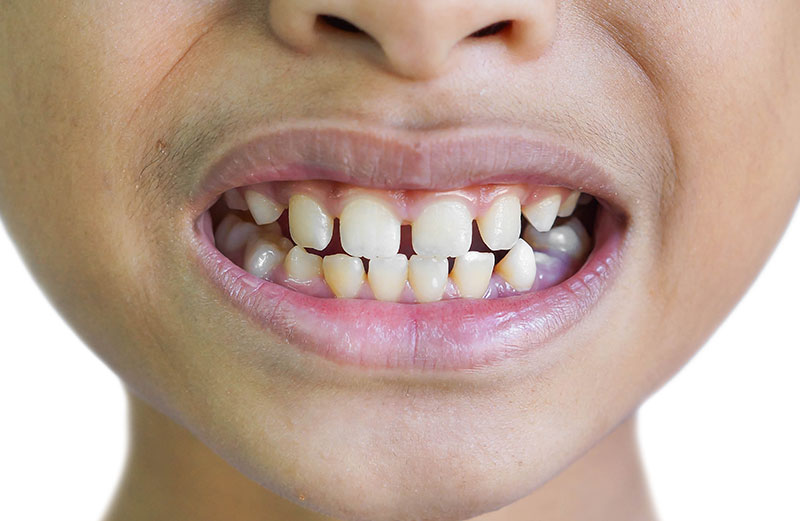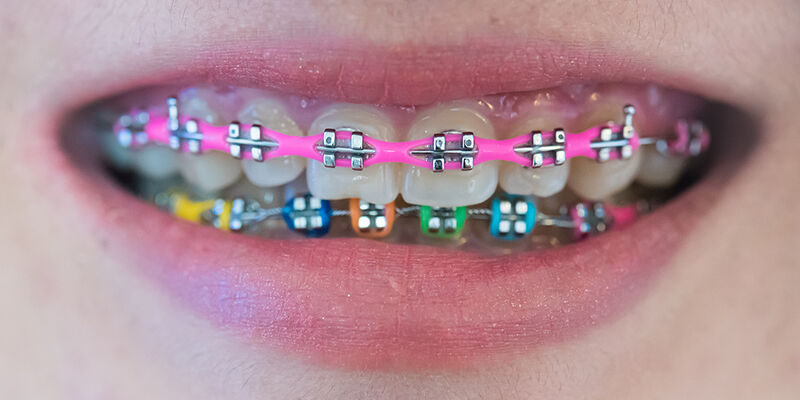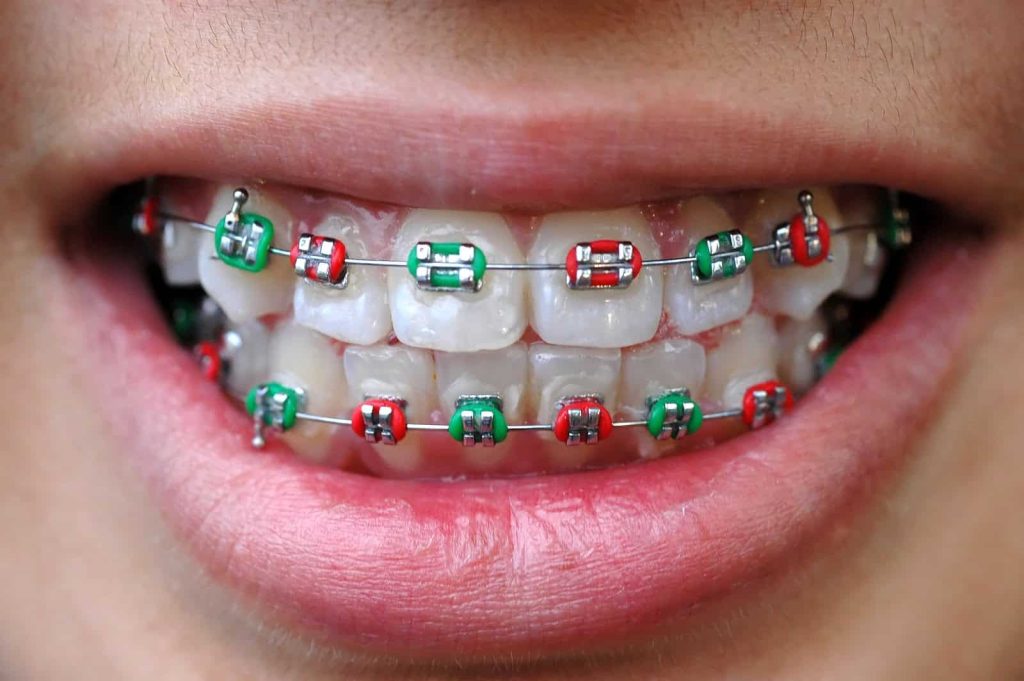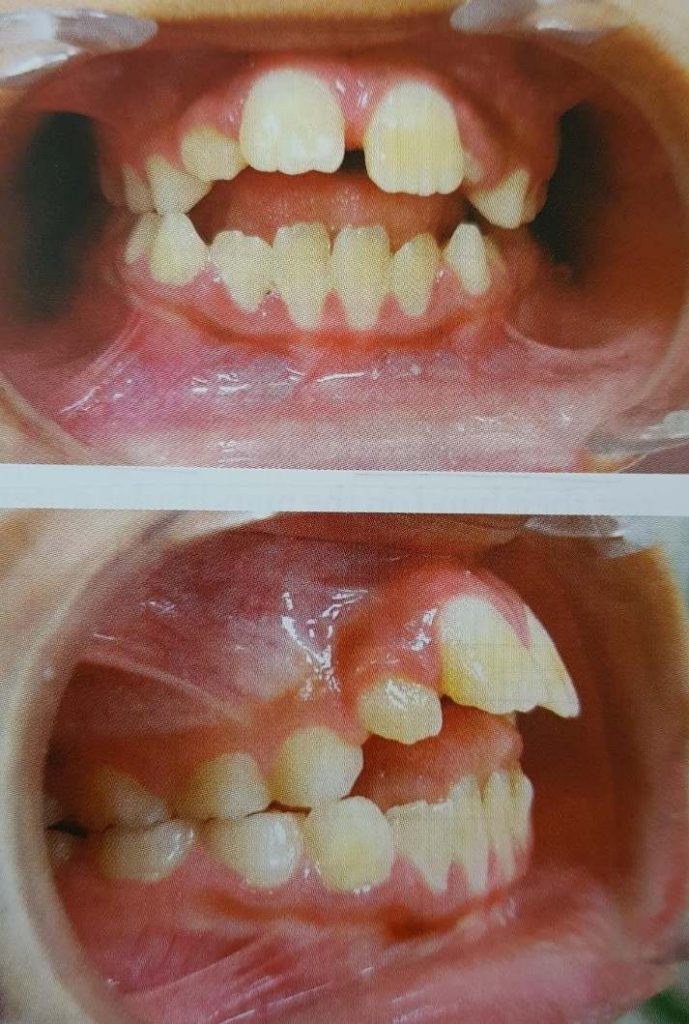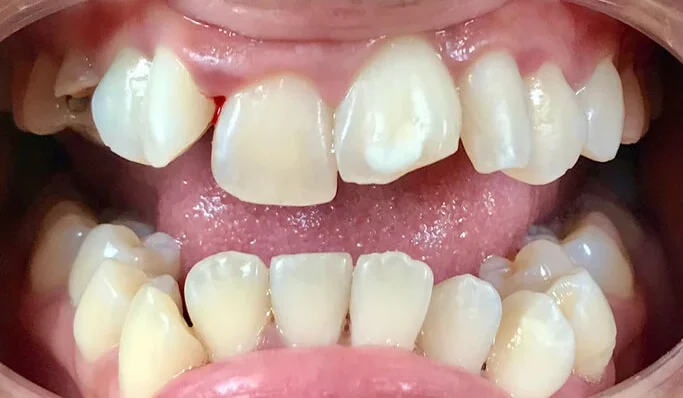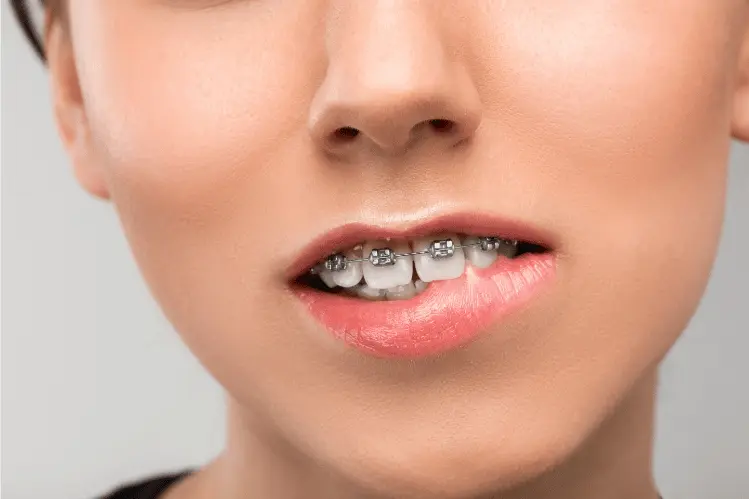Spaces in teeth after braces
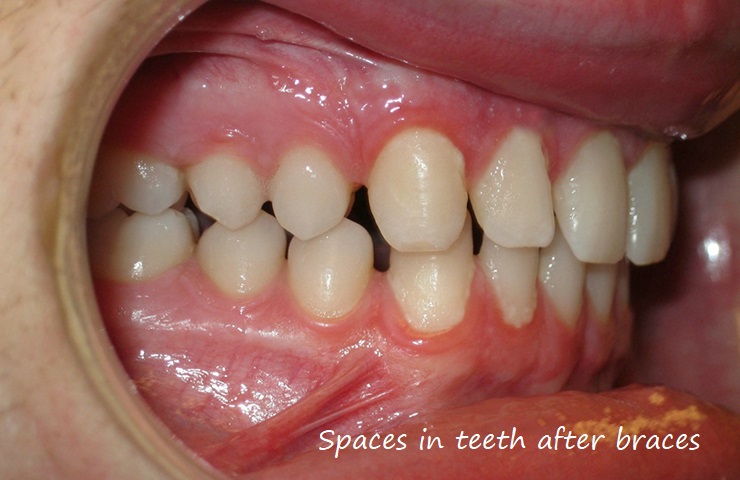
Braces are a common solution for correcting misaligned teeth and achieving a perfect smile. However, some people notice spaces or gaps in their teeth after the braces are removed. These gaps can be concerning and may affect your smile’s aesthetics and overall dental health. This comprehensive guide will delve into the causes, prevention, and solutions for spaces in teeth after braces.
Understanding Teeth Movement and Braces
Before diving into the specifics of gaps after braces, it’s important to understand how braces work and how teeth move during orthodontic treatment.
How Braces Work
Braces apply continuous pressure over time to move teeth into their desired positions. They consist of brackets bonded to the teeth, archwires that connect the brackets, and ligatures (elastic bands) that hold the archwires to the brackets. The pressure exerted by the archwires on the brackets slowly moves the teeth into proper alignment.
Teeth Movement During Braces Treatment
Teeth are anchored in the jawbone but are capable of moving through a process called bone remodeling. When pressure is applied to a tooth, the bone on one side of the tooth compresses and breaks down (resorption), while new bone forms (deposition) on the other side. This process allows the tooth to move within the bone.
Causes of Spaces in Teeth After Braces
There are several reasons why spaces might appear in teeth after braces are removed. Understanding these causes can help you take preventive measures and seek appropriate solutions.
1. Natural Tooth Movement
Teeth can naturally shift over time, even after orthodontic treatment. This is due to the elasticity of periodontal ligaments, which can cause minor movements of the teeth.
2. Incomplete Treatment
In some cases, orthodontic treatment may not be completed as planned. This can result in residual gaps or spaces that were not fully closed during the treatment period.
3. Tooth Extraction Gaps
If teeth were extracted as part of your orthodontic treatment plan, the space left by the extracted teeth might not fully close, leaving gaps.
4. Retainer Issues
Retainers are crucial for maintaining teeth positions after braces are removed. Not wearing retainers as prescribed can lead to teeth shifting back to their original positions, causing gaps.
5. Teeth Size and Shape
Variations in teeth size and shape can cause gaps after braces. If teeth are smaller than average or have irregular shapes, they might not fit perfectly together, resulting in spaces.
6. Gum and Bone Health
Poor gum and bone health can affect how teeth settle after braces. Gum recession or bone loss can create spaces between teeth.
Preventing Spaces After Braces
Prevention is always better than cure. Here are some strategies to prevent gaps from forming after your braces are removed.
1. Follow Your Orthodontist’s Instructions
Adhering to your orthodontist’s guidelines during and after treatment is crucial. This includes wearing retainers as prescribed and attending follow-up appointments.
2. Wear Retainers Consistently
Retainers are essential for maintaining the results of your orthodontic treatment. Wear them as instructed, typically every night, to prevent teeth from shifting.
3. Maintain Good Oral Hygiene
Keeping your teeth and gums healthy can prevent gum recession and bone loss, which can contribute to gaps. Brush and floss regularly and visit your dentist for routine check-ups.
4. Monitor Teeth Movement
Be aware of any changes in your teeth’s alignment. If you notice any gaps forming, contact your orthodontist promptly to address the issue.
5. Use Orthodontic Appliances
In some cases, your orthodontist might recommend additional appliances, such as spacers or elastics, to ensure that teeth move correctly and gaps are minimized.
Solutions for Spaces After Braces
If you already have gaps in your teeth after braces, don’t worry. Several solutions can help close these spaces and restore your smile.
1. Retainers
Retainers are not only for preventing teeth from shifting but can also help close minor gaps. Your orthodontist might adjust your retainer to help close spaces gradually.
2. Orthodontic Re-treatment
In some cases, additional orthodontic treatment might be necessary. This could involve braces or clear aligners to move teeth into their proper positions and close gaps.
3. Dental Bonding
Dental bonding involves applying a tooth-colored resin to the teeth to fill gaps and improve their appearance. It’s a quick and minimally invasive solution for small gaps.
4. Veneers
Veneers are thin shells of porcelain or composite material that are custom-made to fit over the front surface of your teeth. They can be used to close gaps and enhance the appearance of your smile.
5. Dental Implants
If gaps are due to missing teeth, dental implants might be the best solution. Implants are artificial tooth roots that provide a stable foundation for replacement teeth.
6. Gum Treatment
If gum recession is causing gaps, periodontal treatment might be necessary. This can involve procedures to regenerate gum tissue and restore the natural contour of your gums.
Long-Term Maintenance and Care
Once you’ve addressed the gaps in your teeth, maintaining your smile is essential. Here are some long-term tips to keep your teeth in their best shape.
1. Regular Dental Check-ups
Visit your dentist regularly for check-ups and cleanings. Early detection of any issues can prevent problems from worsening.
2. Wear Retainers as Advised
Continue wearing retainers as recommended by your orthodontist. This will help maintain the position of your teeth and prevent new gaps from forming.
3. Practice Good Oral Hygiene
Brush and floss daily to keep your teeth and gums healthy. Good oral hygiene can prevent gum disease and bone loss, which can lead to gaps.
4. Monitor Your Teeth
Keep an eye on your teeth and contact your orthodontist if you notice any changes. Early intervention can prevent minor issues from becoming major problems.
5. Use Orthodontic Appliances if Needed
If your orthodontist recommends additional appliances, use them as directed. These appliances can help maintain the alignment of your teeth.
Frequently Asked Questions (FAQs)
1. Why do I have gaps in my teeth after braces?
Gaps can form due to natural tooth movement, incomplete treatment, not wearing retainers, or variations in teeth size and shape. Poor gum and bone health can also contribute to gaps.
2. How can I prevent gaps after braces?
Follow your orthodontist’s instructions, wear retainers consistently, maintain good oral hygiene, monitor teeth movement, and use orthodontic appliances if recommended.
3. What are the solutions for gaps after braces?
Solutions include wearing retainers, orthodontic re-treatment, dental bonding, veneers, dental implants, and gum treatment.
4. How important are retainers in preventing gaps?
Retainers are crucial for maintaining the results of your orthodontic treatment and preventing teeth from shifting back to their original positions, which can cause gaps.
5. Can gaps in teeth affect oral health?
Yes, gaps can affect oral health by making it harder to clean between teeth, leading to plaque buildup, gum disease, and tooth decay.
Conclusion
Gaps in teeth after braces can be concerning, but they are not uncommon and can be addressed effectively. By understanding the causes, taking preventive measures, and seeking appropriate solutions, you can achieve and maintain a beautiful, gap-free smile. Remember to follow your orthodontist’s advice, wear retainers as prescribed, and maintain good oral hygiene for the best long-term results.
By adhering to these guidelines, you can ensure that your teeth remain properly aligned and that any gaps are minimized or eliminated, helping you maintain a healthy, attractive smile for years to come.
Additional Tips for Maintaining a Gap-Free Smile
While the primary methods for addressing gaps in teeth have been covered, there are additional steps you can take to ensure your smile stays gap-free and healthy.
1. Stay Hydrated
Drinking plenty of water can help maintain saliva production, which is essential for keeping your mouth clean and reducing the risk of gum disease and tooth decay.
2. Avoid Harmful Habits
Avoid habits such as smoking, chewing tobacco, and consuming excessive amounts of sugary foods and drinks. These habits can negatively impact your oral health and contribute to gaps forming between your teeth.
3. Use Interdental Brushes
Interdental brushes can be more effective than regular floss for cleaning between teeth, especially if you have larger gaps. They help remove plaque and food particles, reducing the risk of gum disease and decay.
4. Eat a Balanced Diet
A diet rich in vitamins and minerals is crucial for maintaining healthy teeth and gums. Foods high in calcium, vitamin D, and phosphorus can help keep your teeth strong and your gums healthy.
5. Manage Stress
Stress can lead to habits such as teeth grinding, which can affect the alignment of your teeth and create gaps. Practice stress management techniques such as meditation, yoga, or regular exercise to reduce the risk of teeth grinding.
6. Use Orthodontic Products
There are various orthodontic products available, such as mouthguards for teeth grinding and special floss for braces, that can help maintain the health and alignment of your teeth.
The Role of Orthodontists in Managing Gaps
Orthodontists play a crucial role in both preventing and addressing gaps in teeth after braces. Regular visits to your orthodontist can help ensure that any issues are detected early and addressed promptly.
1. Regular Follow-Up Appointments
After your braces are removed, continue to schedule regular follow-up appointments with your orthodontist. These visits allow your orthodontist to monitor your teeth and make any necessary adjustments to your retainers or other appliances.
2. Customized Retainer Plans
Orthodontists can create customized retainer plans based on your specific needs. These plans may include different types of retainers, such as fixed or removable retainers, to help maintain your teeth’s alignment.
3. Addressing Relapse
If your teeth start to shift after braces, your orthodontist can intervene early to prevent significant relapse. This might involve re-adjusting your retainers or recommending additional orthodontic treatment.
Exploring Advanced Orthodontic Solutions
Advances in orthodontic technology have led to new and innovative solutions for maintaining teeth alignment and preventing gaps.
1. Clear Aligners
Clear aligners, such as Invisalign, are an increasingly popular alternative to traditional braces. They are discreet, removable, and can effectively address minor gaps and misalignments.
2. Accelerated Orthodontics
Accelerated orthodontic techniques, such as Propel and AcceleDent, can speed up the teeth straightening process. These methods use advanced technology to stimulate bone remodeling and reduce treatment time.
3. Digital Orthodontics
Digital orthodontics involves using 3D imaging and computer simulations to plan and execute orthodontic treatment. This technology allows for more precise and efficient treatment, reducing the risk of gaps and other issues.
The Psychological Impact of Gaps in Teeth
The appearance of gaps in teeth after braces can affect more than just your oral health; it can also impact your self-esteem and confidence. Understanding the psychological impact can help you take steps to address these concerns.
1. Self-Esteem and Confidence
Gaps in teeth can make people feel self-conscious about their smiles. This can affect their confidence in social and professional settings.
2. Social Interactions
Feeling self-conscious about your teeth can impact your willingness to smile, laugh, or speak freely in social situations. This can affect your relationships and social interactions.
3. Mental Health
Persistent concerns about the appearance of your teeth can lead to stress and anxiety. It’s important to address these concerns and seek support if needed.
4. Seeking Professional Help
If the psychological impact of gaps in your teeth is significant, consider seeking professional help. A therapist or counselor can help you address these feelings and develop strategies to improve your self-esteem.
Embracing Your Smile
While it’s important to address gaps in teeth for both aesthetic and health reasons, it’s also essential to embrace and love your smile. Everyone’s teeth are unique, and slight imperfections can add character to your smile.
1. Focus on Overall Health
Prioritize the health and functionality of your teeth over perfect aesthetics. Healthy teeth and gums are more important than having a “perfect” smile.
2. Practice Positive Self-Talk
Challenge negative thoughts about your appearance with positive self-talk. Remind yourself of your strengths and the unique qualities that make you special.
3. Seek Support
Talk to friends, family, or a professional if you’re struggling with self-esteem issues related to your teeth. Surrounding yourself with supportive people can help you feel more confident.
4. Celebrate Your Progress
Celebrate the progress you’ve made in your orthodontic journey. Whether it’s the successful removal of braces or the completion of additional treatments, acknowledge your achievements and the effort you’ve put into your dental health.
Final Thoughts
Gaps in teeth after braces can be a source of concern, but with the right knowledge and approach, they can be effectively managed and prevented. By understanding the causes, following preventive measures, and exploring various solutions, you can achieve and maintain a beautiful, healthy smile.
Remember to stay proactive in your dental care, follow your orthodontist’s advice, and embrace your unique smile. With the right care and attention, you can enjoy the benefits of your orthodontic treatment for a lifetime.
By addressing both the physical and psychological aspects of gaps in teeth, you can ensure a comprehensive approach to maintaining your smile. Whether through orthodontic treatments, good oral hygiene, or positive self-acceptance, you have the power to take control of your dental health and confidence.
With this guide, you are well-equipped to navigate the challenges of gaps in teeth after braces and achieve the smile you’ve always desired. Stay diligent, seek professional guidance when needed, and remember that a healthy, confident smile is within your reach.


